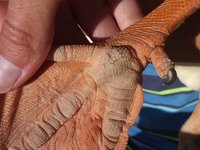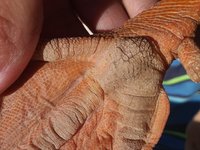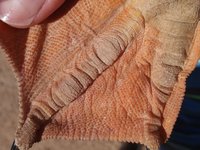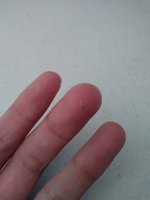I wanted to share a treatment that FINALLY cured my bantam sebright hen of a chronic case of bumblefoot. After 4 bumblefoot surgeries and a month of Baytril, I decided to take Grace to the vet. He instructed me to stop cutting into her and to bandage her with a donut-like splint on the bottom of her foot. I used pipe insulator my husband had and used his drill press with a half inch bit to cut holes in the insulator material. I then used vet wrap to fasten it to the bottom of her foot, with the hole over the infected area. The idea was to relieve the pressure on the infected area. I changed it every 2 to 3 days, as the pipe insulator would become compressed and needed to be replaced. After 6 weeks, the hard mass came to the surface of the foot and could easily be pryed out with no bleeding. I then wrapped for an additional week to be sure all was healed. Thankfully, after 7 long months, Grace is finally healed. Despite my constant web searching, I never found this treatment, which finally cured her. I hope someone finds this treatment helpful, and I
would be happy to provide any pics.
would be happy to provide any pics.








